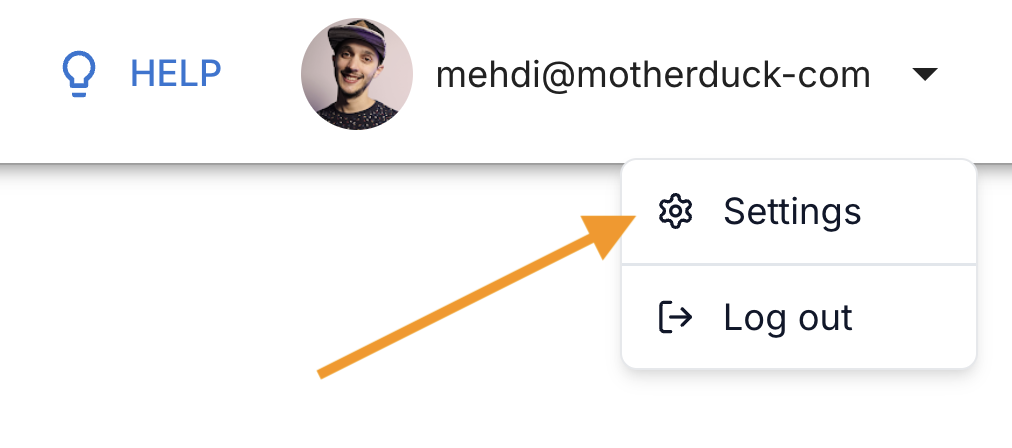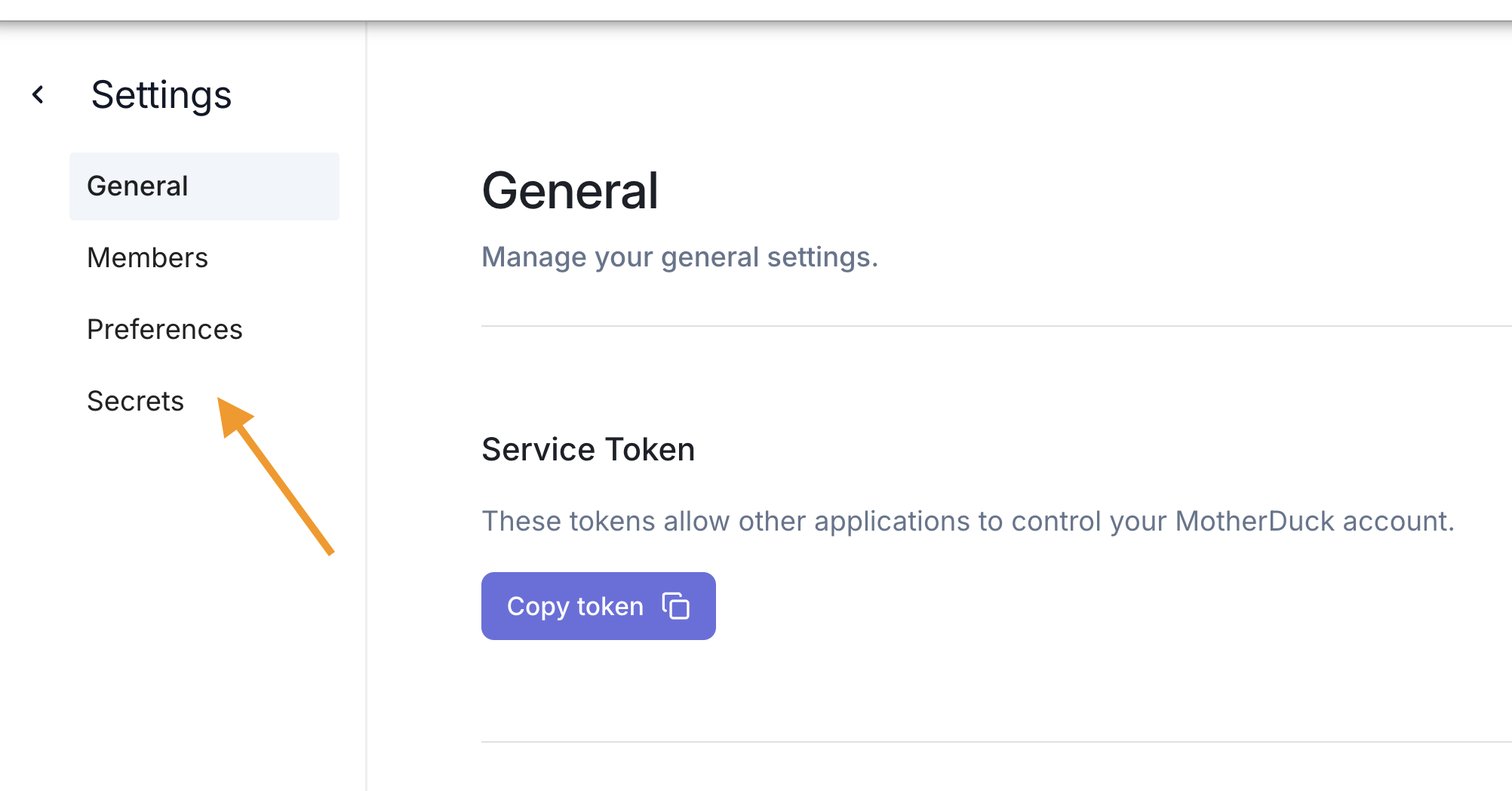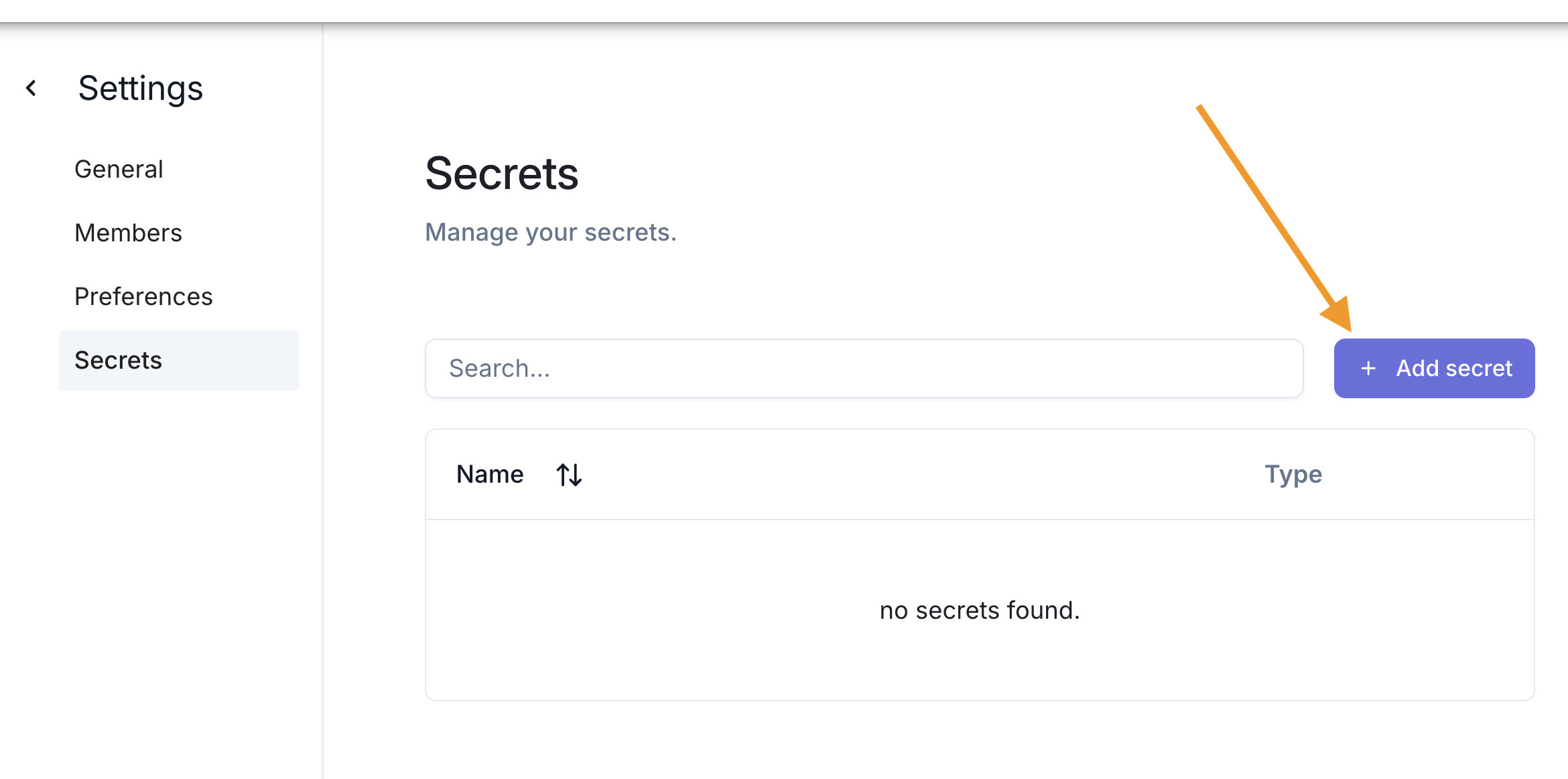Hetzner Object Storage
Configure Hetzner Object Storage credentials
You can safely store your Hetzner Object Storage credentials in MotherDuck for convenience by creating a SECRET object using the CREATE SECRET command.
See Hetzner docs to create S3 access keys. Make sure to save your secret key immediately as it cannot be viewed again after creation.
Create a SECRET object
- SQL
- Python
- UI
CREATE SECRET IN MOTHERDUCK (
TYPE S3,
KEY_ID 'your_access_key', # provided by Hetzner
SECRET 'your_secret_key', # provided by Hetzner
ENDPOINT 'fsn1.your-objectstorage.com', # provided by Hetzner
SCOPE 'your_bucket_scope' # Example: s3://test-bucket
);
The endpoint must include the location (e.g., fsn1, nbg1, or hel1). Available endpoints:
fsn1.your-objectstorage.com(Falkenstein)nbg1.your-objectstorage.com(Nuremberg)hel1.your-objectstorage.com(Helsinki)
-- test the Hetzner Object Storage credentials
SELECT count(*) FROM 's3://[bucket]/[file]'
import duckdb
con = duckdb.connect('md:')
con.sql("CREATE SECRET IN MOTHERDUCK ( TYPE S3, KEY_ID 'your_access_key', SECRET 'your_secret_key', ENDPOINT 'fsn1.your-objectstorage.com', SCOPE 'your_bucket_scope' )");
# testing that our Hetzner credentials work
con.sql("SELECT count(*) FROM 's3://[bucket]/[file]'").show()
Click on your profile to access the Settings panel and click on Secrets menu.


Then click on Add secret in the secrets section.

Select the Secret Type S3 and fill in the required fields. Make sure to add the endpoint URL (e.g., fsn1.your-objectstorage.com) in the endpoint field.
Delete a SECRET object
- SQL
- UI
You can use the same method above, using the DROP SECRET command.
DROP SECRET <secret_name>;
Click on your profile and access the Settings menu. Click on the bin icon to delete the secret.
Hetzner Object Storage credentials as temporary secrets
MotherDuck supports DuckDB syntax for providing Hetzner Object Storage credentials.
CREATE SECRET (
TYPE S3,
KEY_ID 'your_access_key',
SECRET 'your_secret_key',
ENDPOINT 'fsn1.your-objectstorage.com',
SCOPE 'your_bucket_scope'
);
Local/In-memory secrets are not persisted across sessions.
Multiple locations configuration
If you have buckets in different Hetzner locations, you should be creating scoped secrets:
-- Secret for Falkenstein location
CREATE SECRET hetzner_fsn1 IN MOTHERDUCK (
TYPE S3,
KEY_ID 'access_key_1',
SECRET 'secret_key_1',
ENDPOINT 'fsn1.your-objectstorage.com',
SCOPE 's3://my-bucket-fsn1'
);
-- Secret for Nuremberg location
CREATE SECRET hetzner_nbg1 IN MOTHERDUCK (
TYPE S3,
KEY_ID 'access_key_2',
SECRET 'secret_key_2',
ENDPOINT 'nbg1.your-objectstorage.com',
SCOPE 's3://my-bucket-nbg1'
);
By default, each key pair is automatically valid for every bucket within the same Hetzner project. Use bucket policies to restrict access if needed.